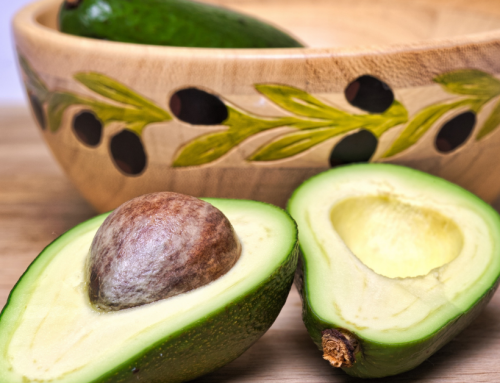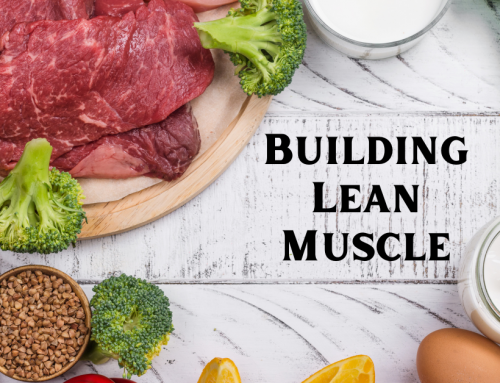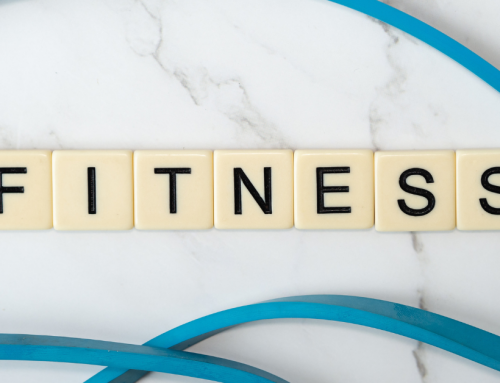After the hard work of your dietary transition, it is now time to make sure you maintain it instead of compromising it.

How To Live A Keto-Friendly Lifestyle
The hard work of your dietary transition in the first week of “The Reset” has been conquered. Prioritizing exercise, sleep, and stress management behaviors support progress toward fat adaption instead of compromising it. The importance of avoiding chronic stressors that are indigenous to modern life should be at the forefront of your thoughts.
Here are some of the main offenders that hinder a person from continuing to progress forward with a dietary and lifestyle change:
- Overly Stressful Exercise Patterns
- Insufficient Sleep
- Type-A hyper-connected mindset
- Overstimulation from Bluelight
- Overloading your To-do list
These stressors overstimulate the fight or flight sympathetic nervous system, something that promotes sugar cravings and fat storage.
The 21-Day Metabolism Reset says:
‘Even if you are diligent with your diet, other chronic stressors trigger sugar burning. With a significance similar to your slamming a slushy at the convenience store. In this chapter, we cover the big-ticket items–the deal breakers for all the diet guidelines in the book if you screw them up.
First is exercise, whereby you’ll conduct an optimal balance of frequent everyday movement. Structured cardio workouts at aerobic heart rates. As well as brief, intense strength and sprint sessions.
Most important of all, you must make absolutely sure you avoid chronic patterns that promote carbohydrate dependency.
Next is sleep, for which its critical to minize artificial light and digital stimulation after dark. Our innocent use of screens at night causes an extreme dysregulation of yoru appetite and fat-storage hormones.
Finally, we cover stress management, where the objective is to slow down and tone down your type-A tendencies, which promote sugar burning and fat storage. Consequently, when you are transitioning out of carb dependency and into low-carb patterns , or transitioning from low-carb to keto, the best results will come when life is good in general.’
The reality of dieting and avoiding stressors is that it is impossible. Every day is full of interesting twists and turns between work, family, and other social obligations. How you internalize all of these stressors is important to consider.
Give yourself extra support by taking deep breaths, before allowing something to throw you so far off track that you feel like you can’t get back.
Stress drives cortisol drives sugar cravings drives insulin drives fat storage equals belly fat.
Exercise stresses and depletes the body, causing your brain to prompt you to consume additional carbohydrates.

EXERCISE: Lift, Sprint, Activate
There are many exercise methodologies available today. One system called “Primal Blueprint” entails a blend of moving frequently, lifting heavy things, and sprinting once in a while.
Discovering this “Primal Blueprint” exercise method has enlightened a deeper understanding of our ancestors and our gene expressions. It has been said by many “we need to get back to our core roots,” and this way of finding movement is a wonderful way to accomplish just that.
The bipedal human machine was not evolved to sit in a chair, over-fed, and deprived of natural survival skills. In fact, we once were hunter-gatherers, resourceful in our methods for finding, killing, and consuming foods. We were once, skilled swimmers, fast runners, toolmakers, boulder pushers. What happened to all of those strong muscles that we have within our reach and how can we develop strength once again?
Moving frequently makes you a good fat burner around the clock. You can become a frequent mover with some everyday cardio, once you ignite those leg muscle groups, they are hard to resist.
Lifting heavy things,– a regular routine of brief, high intensity, and functionality/strength training exercises enhances organ function, supports mobility and functionality, and prevents injury and breakdown of joints and connective tissue.

Sprinting or HIIT training delivers a pulse of anti-aging adaptive hormones, actualizing the natural law to “use it or lose it.” unfortunately, hectic modern life causes humans to really mess things up on the exercise front. Many of us fall short of achieving the bare minimum of basic movement, cardiovascular workouts, any form of high intensity or resistance exercise.
According to the 21-DAY METABOLISM RESET:
‘Once we hit the big 4-0 or thereabouts, we sit on the sidelines, welcome in disease risk factors, and experience a dramatically accelerated decline into feeble old age. Even devoted fitness enthusiasts who do their hour-long daily workouts package with so much downtime commuting, working at a desk, and indulging in screen entertainment during leisure hours that they cannot escape the disease risk factors associated with sedentary lifestyle patterns.
This is a scientifically validated phenomenon known as “active couch potato syndrome.’
The age of examining exercise patterns, eating patterns, and stress patterns are upon us. A lot of people are talking about and inventing new and innovative ways to exercise and manage stress. The ambitious exercise enthusiast will drift into chronic patterns like performing workouts that are too difficult or last too long. And are conducted too frequently with insufficient rest in between. There are many examples of this; the person who has online banking autopay the personal trainer, the person who joins an endurance running team, the elite marathoner, or the Ironman triathlete. You may look great on the outside, but there are things happening inside of your body that can be destroying your health.
Acknowledgment and Approach
Your keto journey is mostly about diet. The idea is to remove excess body fat and deliver a wide range of health and metabolic benefits. The goal is to avoid compromising your progress on keto. Therefore integrating sensible exercise patterns will support and even accelerate your progress.
You need to move frequently. Developing an active lifestyle with regular cardio sessions promote strong cardiovascular and metabolic systems. Your body will become efficient in processing the oxygen that fuels your mitochondria, making you an excellent fat-burner around the clock.
Here are some ideas. Walking is the foundational element here. Get your dog out every day, or twice a day, he deserves it!

Take phone calls or in-person meetings while strolling through the office complex or courtyard, or pacing in your office. Sweater off elevators and take the stairs everywhere all day, every day. Park the furthest spot from the building and walk inside.
The objective is to create more movement in your life, which includes deliberate practices like yoga, pilates, taichi, flexibility and mobility training, static stretching, impromptu air squats. General self-care techniques that create more flexibility and increase blood flow; foam rolling and full body stretches.
Remember the goal here, this is not about burning calories in the name of weight loss, it’s simply about moving. You have nothing to lose and increased range of motion in your joints, improved insulin sensitivity, improved overall cardiovascular health, enhanced oxygen delivery to your brain, and improved cognitive performance to gain.
Aerobic Workouts, Step Aerobics, Biking, Running, Brisk walking
Aerobic exercise is a little bit of a scientific and mathematical equation. There are different levels that each individual possesses based on their age and desired intensity level. Every week, you should strive to accomplish at least two hours of aerobic workouts (fitness walking, jogging, biking, cycling, swimming, row machines, etc.)
The importance of aerobic workouts stems from your heart rate. In order to obtain maximum fat oxidation, you must stay at or below your maximum aerobic heart rate. As long as you maintain at or below this number, you will burn the fattest calories per minute. When you exceed your maximum aerobic heart rate, peak oxidation drops and you trigger a spike in glucose burning.
A great explanation of what happens when you work too hard during a cardio session is explained in the 21-DAY METABOLISM RESET here:
‘This greatly compromises the intended benefits of the workout and pushes you back in the direction of carbohydrate dependency, because the workouts are a bot too stressful and depleting to support fat-adaption. If you feel a tiny bit punky and craving something sweet after a routine cardio workout, you are assuredly exercising at too high a heart rate, cementing your status as a sugar burner accordingly.
When you combine increased general movement with cardio workouts that are truly aerobic and emphasize fat burning, you improve your ability to burn fat both during exercise and at rest, and you can recover quickly because the workout is minimally stressful.’
So here is the mathematical equation on how to calculate your maximum aerobic heart rate.
In the simplest form, your maximum heart rate is 180 minus your age.
- If you are not healthy or fit right now you will want to subtract 5 beats from your calculation.
- If you are super fit and a successful endurance athlete, you can add five beats to your calculation.
- Avoid what exercise scientists call the black hole. It’s a pace that’s below the red-line anaerobic threshold at which you can really feel the strain but is too difficult to be an effective fat-burning session.
- The black hole means you are burning less fat and more glucose. Leaving you feeling tired, fatigued, depleted, hungry for carbs, and can promote oxidation and inflammation.
- Working too hard will create more stress hormones and increase fatigue and acidic damage in the muscles.
- Overly strenuous sessions cause metabolic damage. If you are reaching a glucose burning state, your metabolic pattern is affected for many hours afterward (72 hours to be exact)
Here is a great example of comparison in causing anaerobic metabolic damage vs moving for exercise:
After your lively morning spin class (and high carbohydrate post-workout snack or meal), you’ll burn more sugar instead of fat. Meanwhile, your cubicle neighbor who slept later walked her dog, and had bacon and eggs for breakfast will be burning fat. She’ll be better off in most categories, likely including more success in dropping excess body fat.
Weight Training, Lifting Heavy Things, Primal Essential Movements
The objective here is simple, put your body under some type of resistance load regularly. This will promote your overall health and widen your fitness competency. As well as delay the aging process because you are increasing your strength. Building muscle does not sound as appealing to most women, but the truth is muscle burns fat. Muscle also weighs more than fat. But without putting your body through some kind of strengthening process, you are allowing atrophy to set in.
Do what appeals to you most. There are many options out there, cords, tubes, sandbags, barbells, dumbbells, free weights, and machine weights. It’s all relative to the same goal, adding resistance to strengthen your muscles. The main goal here is to develop an adaptive hormonal response from a workout that is brief in duration. And that challenges your muscles to perform functional, full-body explosive movements.

Whatever type of resistance training you choose, it should be performed at high intensity. Be brief in duration, and be balanced with sufficient rest between challenging sessions.
Every workout should be finished with a feeling of mild yet pleasant fatigue rather than exhaustion. To achieve a temporary spike in fight or flight hormones that stimulate the genetically optimal adaptive response, these workouts should not exceed 30 minutes. Just go hard, then go home!






